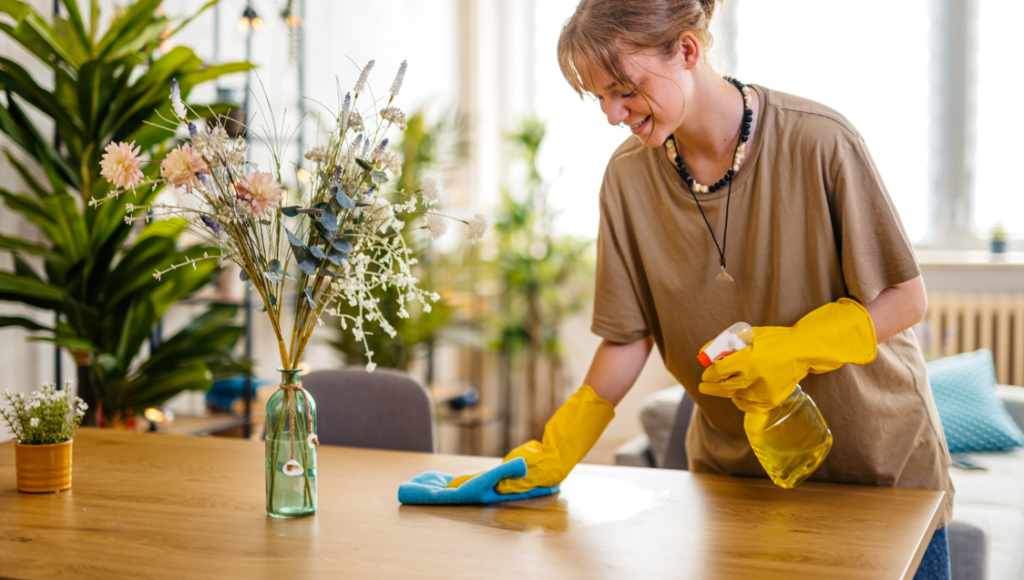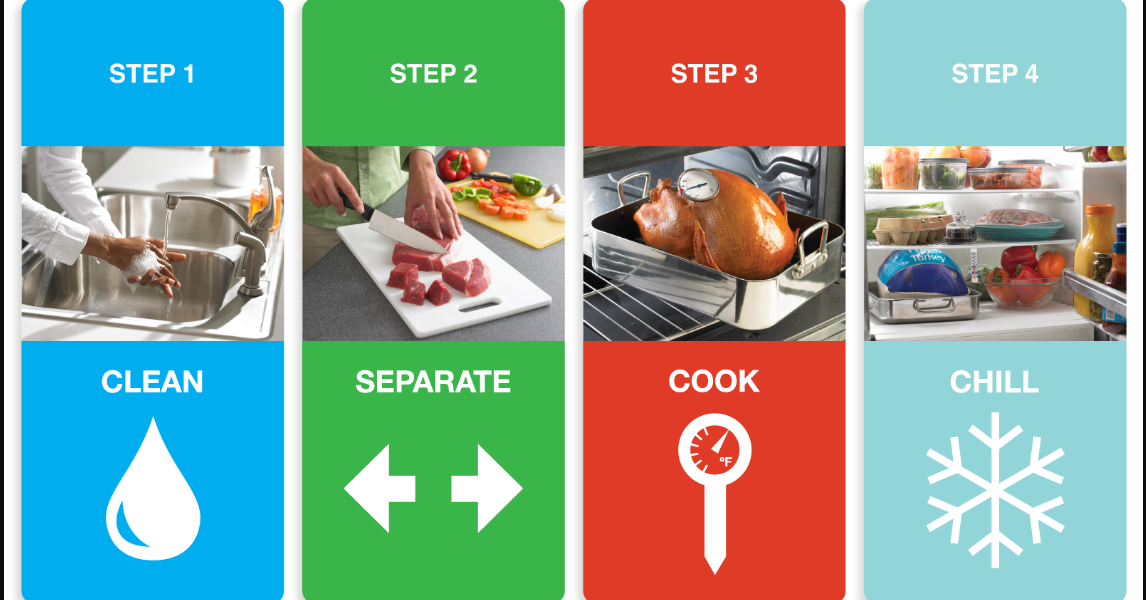Food safety is a critical concern in every kitchen, restaurant, and food supply chain. When people ask, “what is the best way to prevent poor food safety,” they’re seeking practical strategies to avoid foodborne illnesses and ensure meals are safe to eat. Poor food safety can lead to contamination, spoilage, or worse, serious health risks like Salmonella or E. coli infections. This article explores the most effective ways to maintain high food safety standards, from proper storage to hygiene practices and regulatory compliance. Whether you’re a home cook, a professional chef, or a food business owner, understanding how to prevent poor food safety is essential. We’ll cover techniques, tools, and habits that protect consumers and elevate food quality. By mastering these methods, you can confidently answer “what is the best way to prevent poor food safety” and keep your kitchen a safe, healthy space for everyone.
Understanding Poor Food Safety and Its Risks
To grasp “what is the best way to prevent poor food safety,” we first need to understand what poor food safety entails. It refers to improper handling, storage, or preparation of food, leading to contamination by bacteria, viruses, or toxins. Common risks include cross-contamination (e.g., raw chicken touching vegetables), inadequate cooking temperatures, or storing perishables too long. These mistakes can cause foodborne illnesses, affecting millions annually—CDC reports 48 million cases in the U.S. alone. Symptoms range from nausea to severe hospitalization. Poor food safety also wastes resources, as spoiled food gets discarded, impacting budgets and sustainability. For businesses, violations harm reputations and invite legal penalties. Home cooks face personal health risks, especially for vulnerable groups like children or the elderly. Recognizing these dangers highlights why asking “what is the best way to prevent poor food safety” is vital. Effective prevention starts with awareness, setting the stage for practical steps to eliminate hazards and ensure every meal is safe.
Proper Hand Hygiene as a Foundation
One clear answer to “what is the best way to prevent poor food safety” is rigorous hand hygiene. Hands are a primary vehicle for transferring germs like E. coli or Staphylococcus to food. The FDA recommends washing hands with soap and warm water for at least 20 seconds before and after handling food, especially raw meat or eggs. This simple act reduces contamination risks significantly. Avoid touching surfaces like phones or doorknobs mid-prep, as they reintroduce bacteria. For added safety, use hand sanitizers after washing, though they don’t replace soap. In professional kitchens, staff training on handwashing protocols is mandatory, but home cooks should adopt the same discipline. Gloves can help during high-risk tasks, like cutting raw poultry, but change them frequently. Neglecting hand hygiene invites invisible pathogens into meals, undermining other safety efforts. By prioritizing clean hands, you address a core component of “what is the best way to prevent poor food safety,” creating a strong foundation for all other food handling practices.

Safe Food Storage Techniques
Storage is a critical factor when answering “what is the best way to prevent poor food safety.” Improper storage lets bacteria thrive, spoiling food or causing illness. Refrigerate perishables like dairy, meat, and seafood below 40°F (4°C) within two hours of purchase or cooking. Freezers should stay at 0°F (-18°C) for long-term storage. Use airtight containers to prevent air exposure, which accelerates spoilage. Label items with dates to track freshness—raw chicken, for example, lasts only 1–2 days in the fridge. Keep raw foods below cooked items to avoid drips causing cross-contamination. Pantries need attention too; store dry goods like rice in cool, dry places to deter pests. Check for mold or off odors regularly. Restaurants use FIFO (first-in, first-out) to rotate stock, a habit home kitchens can adopt. Smart tools like fridge thermometers ensure consistent temperatures. Mastering these storage methods directly addresses “what is the best way to prevent poor food safety,” keeping ingredients fresh and safe from farm to fork.
Cooking to Safe Temperatures
Cooking food to proper temperatures is a definitive response to “what is the best way to prevent poor food safety.” Undercooked meat, poultry, or eggs can harbor pathogens like Salmonella or Campylobacter. The USDA recommends minimum internal temperatures: 165°F (74°C) for poultry, 160°F (71°C) for ground meats, and 145°F (63°C) for whole cuts, followed by a three-minute rest. Use a food thermometer to verify, as visual cues like color aren’t reliable. Microwaves require extra care—stir and check for hot spots to ensure even heating. Reheat leftovers to 165°F to kill any bacteria from storage. In busy kitchens, chefs calibrate thermometers regularly for accuracy. Home cooks should do the same, avoiding guesswork. Overcooking isn’t the goal; precision is. For seafood, cook until opaque, and boil soups to 212°F (100°C). These standards eliminate harmful microbes, directly tackling “what is the best way to prevent poor food safety.” By hitting the right temperatures, you ensure meals are both delicious and free from health risks.
Avoiding Cross-Contamination
Cross-contamination is a major concern when addressing “what is the best way to prevent poor food safety.” It occurs when pathogens transfer between foods, like raw chicken juices touching salad greens. Use separate cutting boards for raw meats and produce—color-coded boards help. Clean knives and surfaces with hot, soapy water after each task. Never reuse plates that held raw food for cooked items without washing. In fridges, store raw meats on bottom shelves to prevent drips. During prep, wash utensils frequently, especially after handling high-risk foods like poultry. Marinades used on raw meat shouldn’t touch cooked dishes unless boiled first. For picnics or markets, keep raw and ready-to-eat foods in separate coolers. Training kitchen staff on these habits is standard in restaurants, but home cooks must be equally vigilant. Simple tools like disposable wipes or sanitizing sprays add protection. By preventing cross-contamination, you directly answer “what is the best way to prevent poor food safety,” ensuring no harmful bacteria sneak into your meals unnoticed.
Regular Cleaning and Sanitizing
Cleaning and sanitizing surfaces is a cornerstone of “what is the best way to prevent poor food safety.” Kitchens harbor bacteria on counters, sinks, and appliances if not properly maintained. Wash surfaces with hot, soapy water before and after food prep, then sanitize with a solution of one tablespoon bleach per gallon of water. Dishcloths and sponges need daily washing or replacement, as they trap germs. Run cutting boards through dishwashers or soak in sanitizing solution. In commercial settings, health codes mandate frequent sanitization schedules, but homes benefit from similar routines. Don’t overlook fridge handles, oven knobs, or sink faucets—high-touch areas spread contamination. Dry surfaces with clean towels to prevent moisture, which bacteria love. For deep cleans, empty fridges monthly to scrub shelves. Restaurants use professional-grade sanitizers, but household products work if used correctly. Consistent cleaning eliminates invisible threats, directly addressing “what is the best way to prevent poor food safety.” A spotless kitchen isn’t just aesthetic—it’s a frontline defense against foodborne illness.

Importance of Personal Hygiene Beyond Hands
Beyond handwashing, personal hygiene plays a key role in answering “what is the best way to prevent poor food safety.” Cooks with long hair should tie it back or wear nets to avoid strands falling into food. Clean clothing or aprons prevent dust or germs from transferring during prep. Avoid cooking if sick—coughs or sneezes spread viruses like norovirus, a common foodborne culprit. The FDA notes that sick workers cause many outbreaks, so stay out of the kitchen with symptoms like vomiting. Fingernails should be short and clean, as dirt traps bacteria. Jewelry, like rings, can harbor microbes, so remove them while cooking. In restaurants, staff undergo health checks, but home cooks should self-monitor. Showering before long cooking sessions adds a hygiene layer. Teach kids helping in the kitchen these habits early. By maintaining full-body cleanliness, you tackle “what is the best way to prevent poor food safety,” ensuring no personal oversight compromises the safety of meals served to family or guests.
Sourcing Quality Ingredients
The question “what is the best way to prevent poor food safety” starts at the source—choosing quality ingredients. Buy from reputable suppliers, like trusted grocers or farmers’ markets, to ensure freshness. Check expiration dates and inspect packaging for damage—leaky meat packs or dented cans signal risks. For produce, avoid bruised or moldy items, as they spoil faster. Seafood should smell briny, not fishy. When possible, opt for certified organic or locally sourced goods, which often meet stricter safety standards. At home, verify supplier recalls via FDA or USDA alerts, as contaminated batches (e.g., lettuce with E. coli) occur. Farmers’ markets allow direct questions about handling practices. Restaurants prioritize vendors with HACCP certification, a model home cooks can follow by researching brands. Reject items stored improperly at stores, like warm dairy. Quality sourcing reduces contamination risks before food hits your kitchen, directly addressing “what is the best way to prevent poor food safety.” Starting with safe ingredients sets every dish up for success.
Proper Thawing Methods
Thawing food correctly is a vital answer to “what is the best way to prevent poor food safety.” Leaving meat on counters invites bacteria, as temperatures between 40°F and 140°F (4°C–60°C) are the “danger zone” for growth. The USDA recommends three safe methods: fridge thawing (24–48 hours for large items), cold water (changed every 30 minutes), or microwave (followed by immediate cooking). Plan ahead—fridge thawing is slowest but safest, keeping food below 40°F. Never thaw at room temperature, a common mistake in rushed kitchens. For water thawing, use sealed bags to prevent contamination. Restaurants batch-thaw in walk-in coolers, but home fridges work fine. Label frozen items with dates to avoid mystery meat syndrome. Microwaves need care—uneven thawing can cook edges, so monitor closely. Thawing errors lead to spoilage or illness, undermining safety efforts. By using these methods, you directly tackle “what is the best way to prevent poor food safety,” ensuring frozen foods transition safely to cooking, free from bacterial risks.
Monitoring Food Expiration and Spoilage
Keeping track of food freshness is a direct response to “what is the best way to prevent poor food safety.” Expiration dates guide usage, but “use by” means safety, while “best by” indicates quality. Check for spoilage signs—mold on bread, slimy meat, or sour milk odors. Dairy lasts days past dates if stored properly, but don’t risk it with poultry or fish. Freezing extends life but doesn’t stop time; use frozen goods within 6–12 months. Organize fridges with FIFO (first-in, first-out) to use older items first. Apps like FoodKeeper track shelf life, or jot dates on containers. Restaurants face fines for expired stock, so they’re meticulous—home cooks should mimic this. Discard suspect food; “when in doubt, throw it out” prevents illness. Spoilage wastes money and risks health, as bacteria like Listeria grow silently. Regular checks answer “what is the best way to prevent poor food safety,” ensuring only fresh, safe ingredients make it to your plate, protecting everyone at the table.
Training and Education for Food Handlers
Education is a powerful tool for answering “what is the best way to prevent poor food safety.” Knowledgeable food handlers—home cooks or professionals—make fewer mistakes. ServSafe and similar programs teach critical skills: temperature control, cross-contamination prevention, and hygiene. In restaurants, staff must pass certifications, but families benefit from free resources like USDA webinars or CDC guides. Learn danger zone temperatures (40°F–140°F) and safe cooling methods (e.g., two-stage cooling for leftovers). Kids helping in kitchens need basic lessons, like washing hands. Regular refreshers keep skills sharp, as habits slip over time. Online courses or local health departments offer accessible training. Missteps from ignorance, like undercooking pork, cause outbreaks. Restaurants with trained staff report fewer violations. For home cooks, understanding HACCP principles (hazard analysis) elevates safety. By prioritizing education, you address “what is the best way to prevent poor food safety,” empowering everyone handling food to act with confidence and precision, reducing risks across every meal prepared.
Technology’s Role in Food Safety
Technology offers innovative solutions to “what is the best way to prevent poor food safety.” Smart fridges monitor temperatures, alerting you if they rise above 40°F. Food thermometers with apps log cooking temps for accuracy. IoT sensors in commercial kitchens track storage conditions, ensuring compliance. Home cooks can use apps like Yummly for safe recipe timing or FoodKeeper for spoilage alerts. Blockchain tracks supply chains, verifying ingredient origins—useful for spotting recalls. UV sanitizers clean tools quickly, supplementing traditional methods. Restaurants use AI to predict spoilage risks, a trend home kitchens may adopt. Online platforms like X share real-time safety tips or outbreak news. Barcode scanners check product freshness via databases. While tech isn’t foolproof—human error persists—it catches oversights, like uncalibrated fridges. Adopting these tools directly tackles “what is the best way to prevent poor food safety,” blending cutting-edge solutions with classic vigilance to keep food safe from purchase to plate in an increasingly connected world.

Table: Key Food Safety Principles
| Principle | Details |
|---|---|
| Hand Hygiene | Wash with soap for 20 seconds before/after handling food |
| Storage | Keep fridges below 40°F; use airtight containers, FIFO rotation |
| Cooking Temps | Poultry to 165°F, ground meat to 160°F, whole cuts to 145°F |
| Cross-Contamination | Separate raw and cooked foods; use different cutting boards |
| Cleaning | Sanitize surfaces with bleach solution; wash cloths daily |
| Education | Learn via ServSafe, USDA guides; know danger zone (40°F–140°F) |
This table summarizes “what is the best way to prevent poor food safety” for quick reference.
Regulatory Compliance and Inspections
Following regulations is a final answer to “what is the best way to prevent poor food safety.” Health codes, like FDA’s Food Code, set standards for storage, cooking, and hygiene. Restaurants face regular inspections, scoring on cleanliness and compliance. Home cooks aren’t inspected but benefit from knowing rules—like cooling leftovers within six hours. Check local health department websites for guidelines. Businesses use HACCP plans to identify risks, a model for home kitchens (e.g., logging fridge temps). Non-compliance risks fines or closures for pros, while home errors cause illness. Stay updated on recalls—salmonella outbreaks often tie to lax oversight. Train family in basic codes, like separating raw meats. Inspections push accountability, catching lapses like dirty equipment. Even small steps, like reading labels for storage instructions, align with regulations. By adhering to these standards, you tackle “what is the best way to prevent poor food safety,” ensuring your kitchen meets professional-grade safety, protecting health with every meal served.
About Preventing Poor Food Safety
1. What is the best way to prevent poor food safety at home
Wash hands, cook to safe temperatures, store food below 40°F, and avoid cross-contamination.
2. How can I tell if food is unsafe to eat
Check for mold, odd smells, or sliminess; discard anything past expiration or in the danger zone too long.
3. Why is cross-contamination a big deal
It spreads bacteria, like Salmonella from raw chicken to veggies, causing illness if not cooked out.
4. Do I need fancy tools for food safety
No, but thermometers, airtight containers, and sanitizers help; apps or smart fridges are bonuses.
5. How often should I clean my kitchen
Daily for surfaces, weekly for appliances, monthly for fridges to eliminate bacteria buildup.




